The most important routes in Europe and the introduction of our Auto-List Service
Road transport professionals know that when it comes to route-planning, nothing can be left to chance. It is therefore very important to analyse and organize all your business needs when travelling on the continent: tolls, refuelling, secure parking… as well as the ferries we will need to reach our destination. Due to a number of unforeseen circumstances such as weather, breakdowns, road accidents, strike action etc, drivers cannot always get to the ports on time. Therefore, we must have flexible services that adapt to our needs, as well as suppliers that keep us updated in order to make decisions in real-time that could help us avoid unnecessary delays.
The aim of this Overdrive article is to summarise the main routes in Europe along with the services we offer on each of them highlighting among other things the new “Auto-List” service. Auto-List has many advantages, the main ones being: avoidance of major delays allowing you to embark when you arrive at the port or on the next scheduled departure that best suits your needs, no additional costs and no cancellation penalties.
Strait of Bonifacio
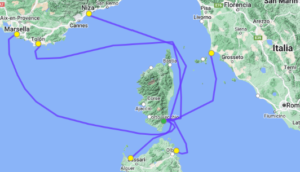
Bonifacio is the strait that separates the island of Corsica (France) and Sardinia (Italy). It is navigable by the main routes that connect the ports of southern Spain and the Gulf of Lion with the Strait of Messina. It is named after the city of Bonifacio, the southernmost city of Corsica. In Vrio Copilot you can find all the available routes that connect the two islands with France and Italy, from Porto Vecchio to Marseille, Nice or Olbia for example.
English Channel and Port of Calais
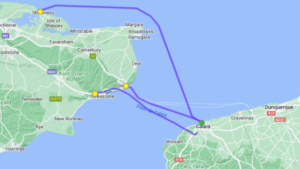
Calais is a strategic port located on the narrowest part of the English Channel, where it joins the North Sea.
The Channel offers the shortest distance between France and the United Kingdom. On a clear day, it is possible to see from one side of the coast to the other even being able to identify individual buildings and landmarks.
With more than five hundred ships a day, it is the busiest sea route in the world. At present, many people and vehicles cross the English Channel through the “Eurotunnel”.
The different routes we offer in Vrio for the Channel:
- The most common will perhaps be from Calais to Dover, but it should be noted that from Calais you can also go to Folkestone or Sheerness. Routes shown in the image above.
- From Cherbourg, you can cross the English Channel to Portsmouth or Poole or also go to Dublin or Rosslare.
- You will also find the route from Dieppe to Newhaven.
Strait of Gibraltar
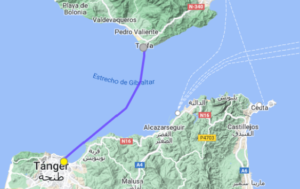
Its narrow width and the intense maritime traffic of its waters (more than 82 000 vessels per year), both between the Atlantic and the Mediterranean and between Europe and Africa, make it one of the busiest crossings on the planet.
The routes which attract most traffic on the Stait include: Algeciras to Ceuta & Tarifa to Tangier.
Furthermore, ferries also sail to Barcelona and Genoa, as well as Sete or Savona from Tangiermed.
Kattegat Strait
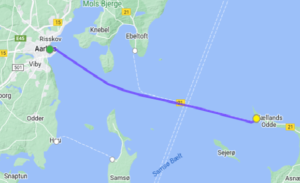
The Kattegat strait links the Baltic Sea with the North Sea (via the Skagerrak). It extends for about 220 km following a north-south axis.
Because the islands of Zealand and Funen almost block the southern strait, it is also said to be a bay rather than a strait. The union with the Baltic is made either by the Øresund to the southeast, or by the Great Belt in the center, or by the Little Belt.
Through this strait, 2 main routes pass, from Greena to Halmstad or Aarhus to Odde.
It should be noted that the Vrio Toll Service also provides devices and coverage for the Oresund bridge. Consult more information about this service in our toll service section.
Skagerrak Strait
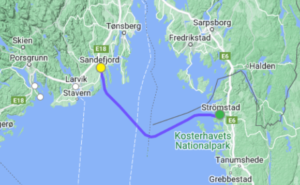
The Skagerrak strait is a wide marine strait that separates southern Norway from Denmark connecting both the North Sea and the Baltic Sea.
The routes that pass through this strait are from Sandrefjord to Stromstad and from Larvik to Hirtshals.
Mesina Strait

A marine strait that separates the island of Sicily from the Italian peninsula, communicating the Tyrrhenian Sea with the Ionian Sea.
In its narrowest section, to the north, its width is only 3 km. You can go from Messina to Vila San Giovanni or to Salermo.
In order to help with your route planning, check out the following links to the products and services highlighted in this article or contact your account manager who can help answer any questions you may have:



